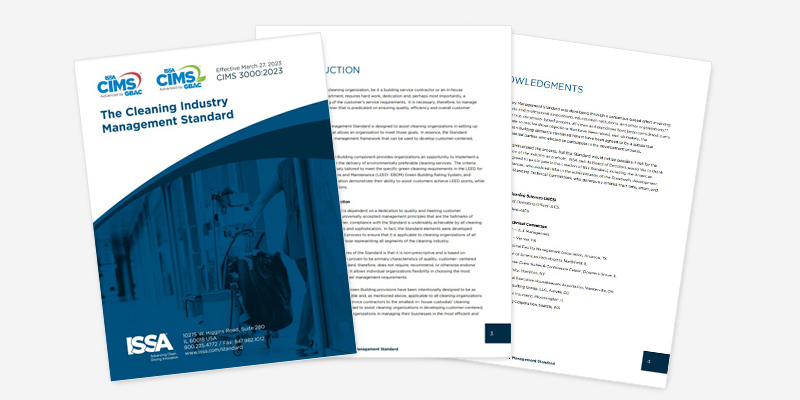The Fomite Factor Target the Touchpoints that Drive Transmission

In the United States, flu season typically runs in the fall and winter. While influenza viruses spread year-round, we typically see a higher number of people getting sick from October through May.
During the 2024-2025 season, Centers for Disease Control and Prevention (CDC) reported there were approximately 47 million illnesses, 610,000 hospitalizations, and 27,000 deaths in the United States, including nearly 300 reported flu-related deaths in children. The burden is particularly high for working-age adults, especially those aged 50-64, and those with chronic conditions. Influenza imposes substantial costs on the U.S., estimated at over US$11 billion annually, from direct medical expenses and lost productivity.
How can you catch a cold or flu?
When most people think about catching a cold or the flu, they imagine someone coughing or sneezing nearby. Respiratory droplets and aerosols are indeed the dominant pathways for viral spread; however, research spanning decades has shown that surfaces, commonly referred to as fomites, can also play a role in transmission. Influenza viruses, rhinoviruses, and adenoviruses, all of which cause cold-like symptoms, can survive on environmental surfaces and be transferred to human hands. When you touch your nose, eyes, or mouth, these viruses can be transmitted.
Understanding this pathway is critical for infection prevention in homes, schools, workplaces, and healthcare settings.
Boone and Gerba, in their 2007 article Significance of Fomites in the Spread of Respiratory and Enteric Viral Disease, reviewed evidence for fomite transmission across multiple viruses and concluded that, although the relative contribution of surfaces compared to airborne pathways varies, environmental contamination is a consistent and underappreciated factor in the spread of respiratory infections.
Influenza viruses: Survival and transfer
Influenza viruses, responsible for seasonal flu epidemics, have been shown to persist on surfaces and spread via indirect contact.
Experiments conducted by Bean et al. and shared in the 1982 article Survival of Influenza Viruses on Environmental Surfaces showed that both influenza A and B virus remained infectious for 24-48 hours on hard, non-porous surfaces (such as plastic and stainless steel) and up to 12 hours on porous materials (cloth, paper, tissues). Viable virus could be recovered from fingers after touching contaminated surfaces. These results suggested a potential fomite route of infection, especially in high-touch environments.
Subsequent studies confirmed and expanded these findings. In a 2011 research study by Greatorex and colleagues, influenza A(H1N1) was tested on household materials and found survival times sufficient to permit transmission. The virus remained detectable on stainless steel and plastic for 24 to 48 hours, indicating that routine household surfaces can act as reservoirs.
Reviews of influenza transmission modes have highlighted the role of surfaces as complementary to airborne pathways. In 2008, Weber and Stilianakis analyzed influenza survival and inactivation, concluding that while droplets and aerosols dominate, contaminated surfaces remain a plausible secondary pathway, particularly in settings where hand-to-face contact is frequent.
Rhinoviruses and self-inoculation
Some of the most compelling evidence for surface transmission comes from experimental studies on rhinoviruses, the leading cause of the common cold. In 1973, Hendley and colleagues demonstrated that volunteers developed colds after touching their nasal mucosa with fingers contaminated by virus transferred from dried environmental surfaces. This experiment directly established that surfaces could act as vehicles of infection.
Follow-up studies deepened this understanding. Gwaltney, Moskalski, and Hendley (1978) demonstrated that rhinovirus can be transmitted hand-to-hand, often starting with contaminated fomites, before reaching the mucous membranes. Then, in 1982, Gwaltney and Hendley confirmed that experimental rhinovirus infections could be transmitted by contaminated surfaces alone, without direct person-to-person contact.
Environmental studies reinforced the point. In 1981, Reagan, McGeady, and Crowell added laboratory evidence showing that rhinoviruses can persist on surfaces long enough to maintain infectivity. In 2007, Winther and colleagues found that frequently touched objects, such as doorknobs and toys, were contaminated with rhinovirus in community settings and that healthy individuals easily acquired virus on their fingertips during routine activities.
Adenovirus outbreaks and environmental stability
Adenoviruses, another group of respiratory pathogens that can cause cold-like illness, are particularly hardy in the environment. As early as 1973, Hierholzer noted their unusual stability outside the body, raising concerns about environmental transmission. In 1984, Gerba demonstrated that adenoviruses survive well on surfaces and can be transferred to fingers, creating a direct pathway for infection.
Real-world outbreak investigations have shown this risk in practice. Russell and his colleagues studied a military training facility experiencing adenovirus outbreaks in 2006. They collected environmental samples and found widespread contamination of surfaces, suggesting that fomites played a role in sustaining transmission among U.S. military recruits.
Respiratory Syncytial Virus (RSV)
RSV is a common, highly contagious respiratory virus in the U.S. It is the most common cause of hospitalization in children younger than one year. There are approximately 2.1 million outpatient visits and 58,000 to 80,000 hospital stays among children younger than five years. Each year, an estimated 110,000 to 180,000 adults aged 50 and older are hospitalized.
In a 1980 study, Hall, Douglas, and Geiman found that RSV in freshly obtained infant nasal secretions was recovered from countertops for up to six hours, from rubber gloves for up to 90 minutes, from cloth gowns and paper tissue for 30-45 minutes, and from skin for up to 20 minutes.
Implications for infection prevention
For decades, scientific evidence has shown that viruses causing colds and influenza can spread via contaminated surfaces, which extends transmission beyond coughing and sneezing. Airborne and droplet pathways are typically more efficient and account for the majority of infections. But the chain of evidence is clear: Viruses survive on surfaces, transfer to hands, and infect people through self-inoculation.
Recognizing and addressing this risk through cleaning, disinfection, and hand hygiene remains a cornerstone of comprehensive infection prevention strategies.
References for the article on the preceding page:
Bean, B, et al. Survival of influenza viruses on environmental surfaces. Journal of Infectious Diseases, 1982;146(1), 47–51.
Boone SA, Gerba CP. Significance of Fomites in the Spread of Respiratory and Enteric Viral Disease. Applied and Environmental Microbiology. 2007;73(6):1687–1696.
Gerba CP. Adenoviruses on Environmental Surfaces. Applied and Environmental Microbiology. 1984;48(1):49–54.
Greatorex, JS, et al. Survival of influenza A (H1N1) on materials found in households: Implications for infection control. PLOS ONE, 2011;6(11), e27932.
Gwaltney JM Jr, Hendley JO. Transmission of experimental rhinovirus infection by contaminated surfaces. American Journal of Epidemiology. 1982 Nov;116(5):828-833.
Gwaltney JM, Moskalski PB, Hendley JO. Hand-to-Hand Transmission of Rhinovirus Colds. Annals of Internal Medicine. 1978;88(4):463–467.
Hall CB, Douglas RG Jr, Geiman JM. Possible transmission by fomites of respiratory syncytial virus. The Journal of Infectious Diseases. 1980 Jan;141(1):98-102.
Hendley JO, Wenzel RP, Gwaltney JM Jr. Transmission of Rhinovirus Colds by Self-Inoculation. The New England Journal of Medicine. 1973;288(26):1361–1364.
Hierholzer JC. Adenoviruses in the Environment. Science. 1973;179(4070):986–990.
Reagan, KJ, McGeady, ML, Crowell, RL. Persistence of human rhinovirus infectivity under diverse environmental conditions. Applied and Environmental Microbiology, 1981;41(3), 618–620.
Russell KL, et al. Transmission Dynamics and Prospective Environmental Sampling of Adenovirus in a Military Recruit Setting. The Journal of Infectious Diseases. 2006;194(7):877–885.
Winther B, et al. Environmental Contamination with Rhinovirus and Transfer to Fingers of Healthy Individuals by Daily Life Activity. Journal of Medical Virology. 2007;79(10):1606–1610.
Weber TP, Stilianakis NI. Inactivation of Influenza A Viruses in the Environment and Modes of Transmission: A Critical Review. Journal of Infection. 2008;57(5):361–373.

















